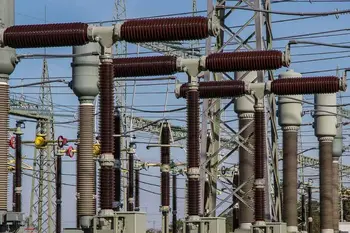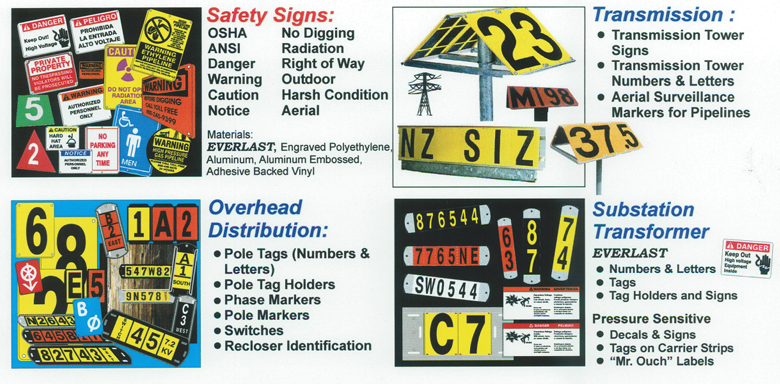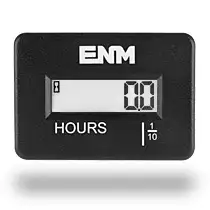Electric Power Distribution
By William Conklin, Associate Editor

Download Our OSHA 3875 Fact Sheet – Electrical PPE for Power Industry Workers

- Follow rules for rubber gloves, arc-rated PPE, and inspection procedures
- Learn employer obligations for testing, certification, and training
- Protect workers from arc flash and electrical shock injuries
Electric power distribution delivers electricity from substations to homes, businesses, and industries, using transformers, feeders, and circuits to maintain voltage stability, ensure reliability, and support safe, efficient energy delivery.
What is Electric Power Distribution?
Electric power distribution transfers medium-voltage electricity—typically ranging from 2 kV to 35 kV—from distribution substations to end users. This voltage is stepped down by distribution transformers to secondary levels, such as 120/240 V in North America, for residential and commercial consumption.
✅ Transfers electricity from generation plants through substations to end users
✅ Uses transformers, feeder lines, and distribution circuits for voltage control
✅ Ensures safe, reliable, and efficient energy delivery
Distribution systems are a subset of the larger grid, linking transmission lines, substations, transformers, and service drops into a cohesive network. Their design must ensure voltage regulation, load balancing, and service continuity, even under fault conditions or peak load demand. Modern electrical distribution systems combine traditional infrastructure with advanced monitoring to ensure safe and efficient energy delivery.
Core Components of the Distribution System
Transformers and Voltage Regulation
Transformers adjust voltage levels to match the stage of delivery. High voltages—such as 12.47 kV or 13.8 kV—are optimal for efficient medium-distance transportation through primary feeder circuits. On-load tap-changing (OLTC) transformers automatically regulate output voltage in response to load changes, while capacitor banks correct power factor and help maintain system stability. These devices are essential for ensuring end users receive power at a safe and usable level.
Distribution Substations
Distribution substations act as hubs, connecting high-voltage transmission lines to medium-voltage distribution networks. Inside, busbars distribute power to multiple feeders, while circuit breakers, reclosers, and surge arresters protect against short circuits, overloads, and transient overvoltages. Voltage regulators and switching gear allow operators to maintain optimal operating conditions and reroute power as needed.
Electricity Today T&D Magazine Subscribe for FREE

- Timely insights from industry experts
- Practical solutions T&D engineers
- Free access to every issue
Transmission and Primary Circuits
Transmission lines move energy over long distances at high voltages to minimize energy losses. At the substation, voltages are stepped down for entry into the primary distribution network. Primary circuits—often operating in the medium-voltage range—carry power to local areas, where it will be stepped down again for secondary distribution. The role of electricity transmission is critical in moving high-voltage power from generation plants to substations before it enters the distribution network. Distribution lines connect local communities to the larger power grid, receiving electricity from the high-voltage transmission system and delivering it safely to end users.
Distribution Network Designs and Reliability
Distribution networks are typically designed as radial systems or network configurations.
-
Radial feeders resemble a tree structure, with each branch supplying a specific area. They are cost-effective and common in suburban and rural regions but more vulnerable to outages.
-
Network systems interconnect multiple feeders and transformers, allowing energy to flow from several directions. This improves reliability in dense urban areas, where service continuity is critical.
Tie switches connect different feeders, enabling operators to reroute power during maintenance or outages without prolonged service interruptions.
Modern Advancements in Distribution
Smart Grid Technology
The smart grid integrates advanced monitoring, automation, and communication systems into traditional power distribution. Supervisory Control and Data Acquisition (SCADA) platforms collect real-time performance data, while automated reclosers and remote-controlled switches enable rapid fault isolation and service restoration. By improving visibility and control, smart grids enhance efficiency, reduce downtime, and optimize voltage profiles. Utilities are increasingly adopting distribution automation technologies to improve reliability, reduce outage times, and optimize network performance.
Distributed Generation and Renewables
Today’s distribution systems increasingly accommodate distributed energy resources (DERs) such as rooftop solar panels, wind turbines, and battery storage. Microgrids allow localized energy generation and storage, supporting grid resilience during disturbances. This integration demands bidirectional power flow management, voltage regulation strategies, and advanced protection schemes. The integration of distributed energy resources such as solar, wind, and battery storage is reshaping how power is generated and delivered at the distribution level.
Operational Strategies for Efficiency and Safety
Load Management
Load management is the practice of balancing electricity supply and demand in real time. Utilities employ demand response programs to reduce peak loads, shift consumption to off-peak hours, and avoid overloading critical equipment. Energy storage systems, such as lithium-ion batteries, supplement supply during high-demand periods and store excess energy when demand is low.
Voltage Regulation and Protection Systems
Maintaining voltage within acceptable limits is essential for both equipment longevity and service quality. Utilities use OLTC transformers, capacitor banks, and line voltage regulators to ensure consistent voltage delivery. Protective equipment—circuit breakers, fuses, reclosers, and surge arresters—safeguards against equipment damage, electrical faults, and safety hazards. SCADA integration allows real-time monitoring and swift corrective action.
Feeder Circuits and Switches
Feeder circuits, whether overhead or underground, carry medium-voltage electricity from substations to distribution transformers. Sectionalizing switches allow operators to isolate parts of the feeder for maintenance, improve load balancing, and quickly restore service after a fault. Deploying a fault indicator along feeder lines allows utilities to quickly pinpoint and isolate problems, reducing downtime and maintenance costs.
Final Stage: Delivery to the End User
At the final step, distribution transformers—mounted on utility poles, in pad-mounted cabinets, or installed in underground vaults—reduce medium-voltage power to secondary voltages suitable for end-user applications. Residential customers typically receive 120/240 V service, while commercial and industrial users may require higher secondary voltages. This last transformation ensures safe, reliable, and efficient power delivery tailored to the specific needs of each customer.
Related Articles








